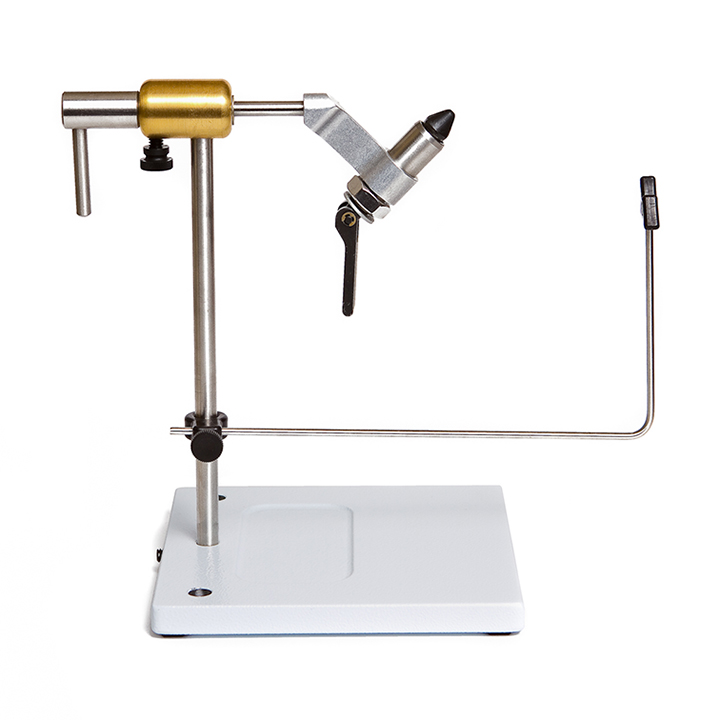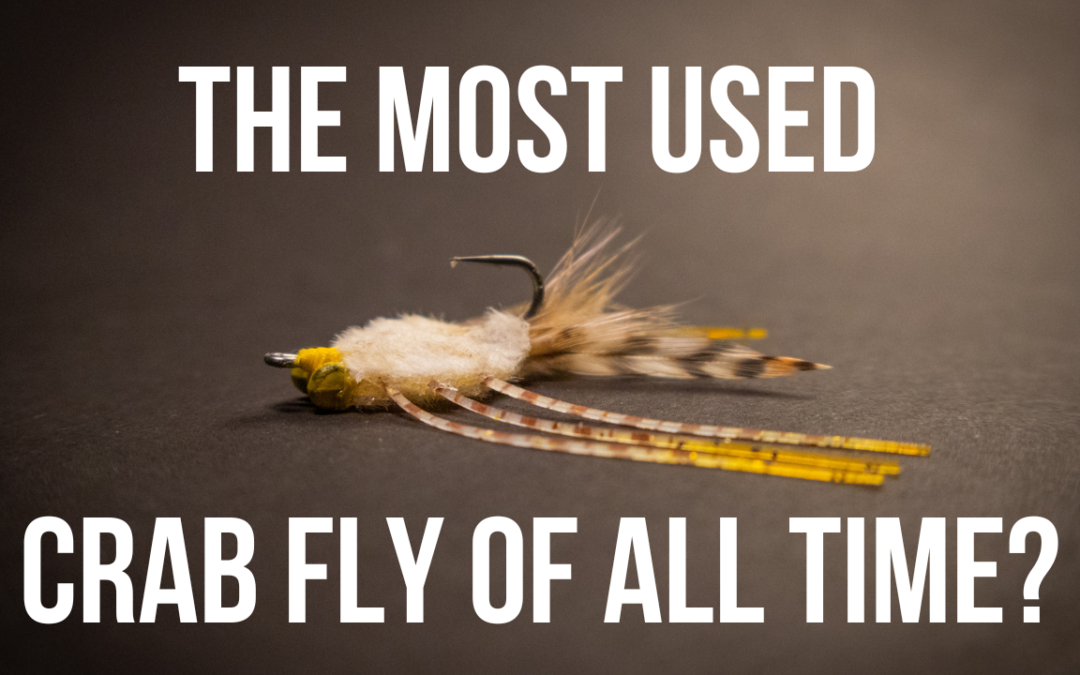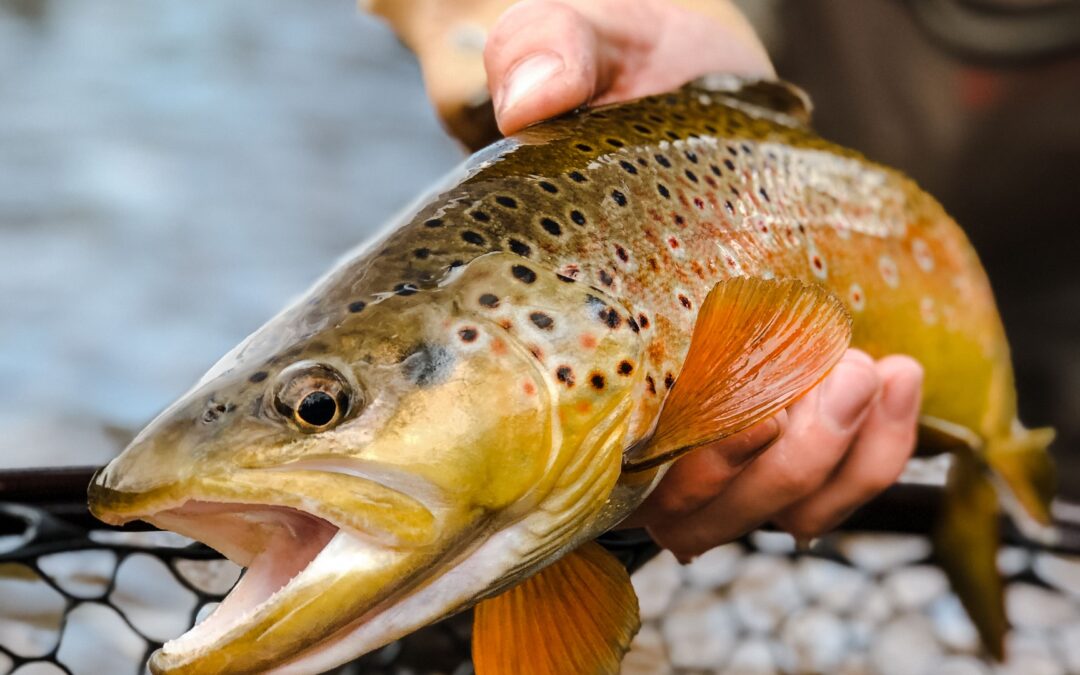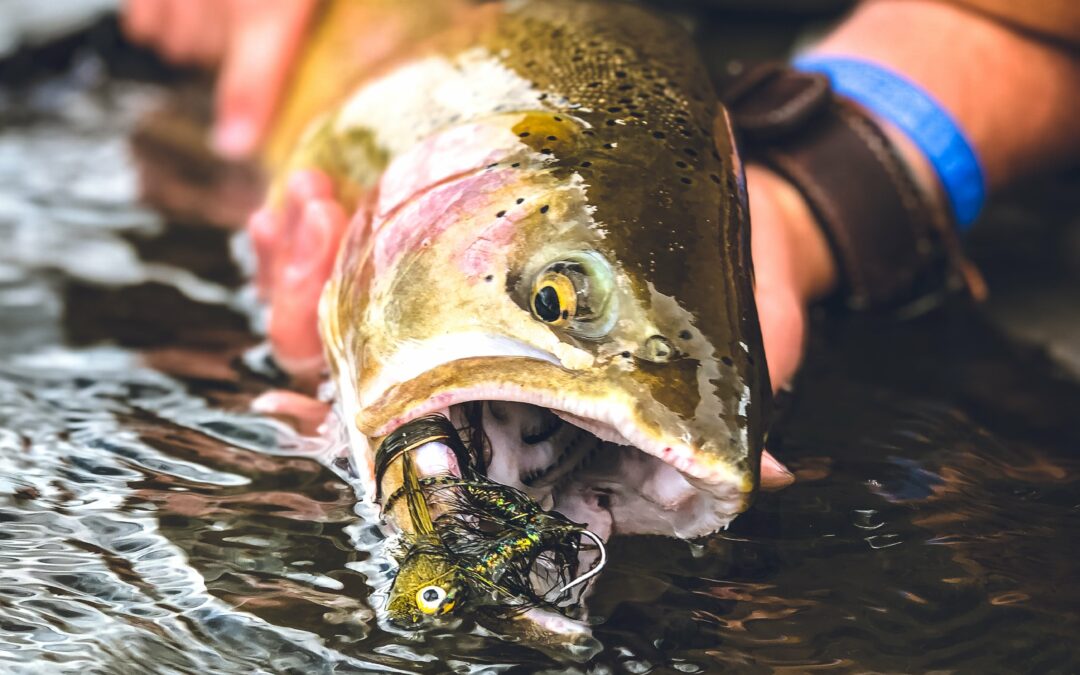I am revisiting this article almost three years after originally publishing to make some updates to my thoughts and opinions. Since I originally wrote this, I have switched my vise to the Renzetti Master from the Regal Revolution. Both are incredible vises and their respective brands’ top-end options. That said, I do believe the Renzetti Master is the better all-around vise. Its ability to go from a #24 midge to a giant 10/0 saltwater hook without having to change out the jaws is truly unmatched. I have tied everything from large bucktail changers to permit crabs and anything else you can imagine. With that said, If you’re looking for a single vise to last the rest of your tying career, this is the one I would recommend. Please find the rest of the article below, where I cover all the vises I have owned in a bit more detail. I have also added a few more tools and accessories that have really improved the workflow at my bench. Cheers! & as always, feel free to reach out via Instagram or email if you have any questions.
Disclaimer: This article contains affiliate links for Trident Fly Fishing, meaning if you make a purchase through these links, I may earn a commission at no extra cost to you. This supports my family and allows me to continue providing valuable content. My reviews remain unbiased and based on my experiences. If you find this guide helpful, consider supporting us by using the provided links. Thank you!
A Guide To Purchasing The Right Fly Tying Vise
If you’re serious about tying flies or getting more into tying flies, then you may be at the point where you’re wondering what tools are necessary for upping your game. There is no doubt about it. A good tying vise is crucial to producing flies you can be proud of. After all, the last thing you want is your hook sliding out of a low-quality tying vise, launching across the room, hitting you in the eye, or finding it later in the bottom of your foot.
How To Select The Best Fly Tying Vise For You, This Is Important
A question I get asked often regarding tying flies is what vise do I like the most or recommend? It’s a difficult question to answer for many reasons, but mostly because it depends on you, your fly-tying style, the flies you’re tying, and what you’re trying to achieve with fishing.
For example, if you tie a lot of tiny tailwater flies, a vise with an option for midge jaws is going to be critical. On the other hand, maybe you tie giant streamers on 2/0 hooks for the White River, and something with a lot of gripping power is what you need. As you can see, there are a lot of factors to consider, but at the end of the day, you need the right vise for YOU.
What Type Of Fly Tier Are You & What Type of Fly Tying Vises Fit Your Style?
I think the best way to purchase your next vise is first to consider what type of fly tier you are. Are you a beginner or a seasoned pro? Or maybe somewhere between? Do you like to tie streamers or small midges? How much do you want to spend? These are all questions you will need to answer if you want to make your next vise purchase a successful one.
Features to Consider When Purchasing Your Vise.
Here are some features you will want to consider when making your next vise purchase:
Choosing Your Fly Tying Vise Jaw & Vise Head
Depending on what type of flies you like to tie, different vise heads & jaws may or may not accommodate the different hook sizes you like to work with. Choosing a vise with a midge jaw option will be critical if you like to tie tailwater bugs. The same goes with large streamers and jaws with a lot of hook-holding power. As mentioned above, holding hooks securely is not only a concern for your flies, but a safety concern for you!
Rotary Fly Tying Vise
A lot of the newer vises on the market have a rotary function. A rotary tying vise is great for many reasons, but especially when you’re trying to get a good look at your fly from all angles, utilize a lot of dubbing loops, or palmer a lot of materials. If you don’t think this is something you would use, it’s probably not worth spending the extra money on. Quite honestly, when tieing smaller bugs, I generally don’t use the rotary function on my vises. However, when tying streamers and reverse tying a lot of materials like craft fur and bucktail or putting materials in dubbing loops, I use it quite often.
Vise Hook Holding Power
How well does the vise grip the hook while you’re tying? Is it built for the hooks you most frequently use? The last thing you want is hooks being shot across the room like BBs because your vise can’t hold onto that tiny #24 dry fly hook.
Fly Tying Vise Prices
Of course, price is always a factor when making any purchase, especially with fly-tying vises. A good vise can run you as little as $200 and up to $1,000. Like anything, you get what you pay for. That’s not to say you can’t tie banging flies on a $175 Peak Rotary Vise.
Fly Tying Vise Portability
Are you someone who ties flies on the go? If so, you’ll want to consider a vise that is easily portable and doesn’t weigh much.
Fly Tying Vise Durability
Is the vise made from high-quality materials that will last a long time, even with heavy use? Does it include a lifetime warranty? Most quality American vises made these days do. You’ll want to get one of those.
C Clamp Fly Tying Vise vs. Pedestal Base Fly Tying Vise
Depending on what type of flies you tie, you may need to upgrade your fly-tying vise base. There are different types of bases, like pedestal bases and C-Clamps, which are outlined below.
C Clamp Fly Tying Vises
C Clamp Fly Tying Vise Pros:
- It can be attached to any table or flat surface.
- It takes up less space on your tying bench.
- Easier to transport
- It can be more sturdy as it plays off the weight of whatever you attach it to
C Clamp Fly Tying Vise Cons
- Lack of mobility while tying
- At the mercy of the table or desk height
Pedestal Base Fly Tying Vises
Pedestal Base Fly Tying Vises Pros
- Can be elevated to your preferred tying height
- More mobile on the bench
- Can store things on the pedestal, like beads and hooks
Pedestal Base Fly Tying Vises Cons
- Heavier and bulkier to transport
- It takes up more space on your bench.
The Best Fly Tying Vices, In My Opinion
Now that we’ve covered what you need to be looking for in a vise that will suit your tying style let’s dive into some of the best vises on the market. I will only highlight vises I have personally owned and tied on. The three brands I will touch on are Renzetti, Peak, and Regal. These are just a few of the major players in the vise game. There are certainly other great brands like Norvise and HMH, among others. Just do your research and consider the above factors when making your purchase.
Best Fly Tying Vises For The Money
If you’re like most tiers, you don’t want to spend a ton of money on a vise. If you’d rather save money and put it towards more materials and hooks, more power to ya. That being said, some great options are still in the under $250 price range.
Renzetti Traveler Fly Tying Vise
This is an excellent all-around vise that will accommodate hooks from size 24 all the way up to streamer hooks. It’s very lightweight and portable, making it perfect for those who like to tie on the go or don’t have a lot of room on their tying bench. The jaws are made from stainless steel and can be swapped out depending on what type of flies you tie. Like all Renzetti products, it’s high quality and will last forever, pending a few jaw changes along the way.
)
Peak Rotary Fly Tying Vise
The Peak Rotary is in my current lineup for a good reason. It’s a great all-around vise that will accommodate hooks from size 24 up to 4/0 streamer hooks. The jaws are made from stainless steel, and midge jaws are also available. Ironically enough, I actually use the Peak midge jaws to tie all my flies that use a shank platform like Gamechangers, among others.

The Best of The Best
Regal Revolution Fly Tying Vise
Now, if you want the best and are willing to spend a little extra money, I highly recommend the Regal Revolution. This vise is built like a tank and will accommodate hooks from size 24 up to 12/0 streamer hooks, depending on which vise heads you have. I use this vise for almost all applications utilizing the stainless steel head and the big game head. With that said, the rotary function is buttery smooth, and it has a ton of biting power for those who like to really crank down on their materials like myself. Not to mention, it’s absolutely beautiful to look at.

Renzetti Master Fly Tying Vise
I’ve never owned a Renzetti Master but recently tied on good friends. Undoubtedly, it is one of the best fly-tying vises on the market because of its superior design and construction. The vise is made from cast aluminum and stainless steel for durability and has a smooth rotary that allows easy access to all fly parts. If you’re looking for a vise that’s both functional and good-looking, the Renzetti Master definitely fits the bill. So if you’re in the market for a new fly-tying vise and willing to spend the coin, be sure to check out the Renzetti Master. You won’t be disappointed.

So there ya have it. These are just a few of the better vise options on the market. Be sure to do your research and consider what features are important to you and your style of tying before making a purchase. Nothing is worse than dumping a wad of cash on a new vise to find out you like your old one better.
My Must-Have Fly Tying Vise Accessories & Tools
While no “accessories” and tools are technically necessary, a few will definitely up your fly-tying game!
Accessories
Fly Tying Lamps
A good fly-tying lamp is a must-have for any tyer. Not only will it help you see your materials better, but it will also prevent eye strain and help you achieve more accuracy with whatever you’re tying. I’ve tried a few different lamps over the years, and my current favorite is the JKSWT LED Lamp I found on Amazon. I was searching for a while but settled on this one because it has five different light levels and five different color modes, making it great for any environment. The head and neck also swivel, allowing you to hit your bugs with light from any angle necessary. Overall, It’s super bright, has a flexible neck, and doesn’t generate a ton of heat like some other lamps on the market.
Fly Tying Bench or Fly Tying Desk
If you don’t have a lot of space or like to tie on the go, then a portable fly-tying bench is definitely worth considering. However, if you’re like me, you have a whole space dedicated to fly tying in your home and more flexibility when choosing a tying station. I personally found an old refurbished executive desk on Facebook Marketplace for $150, and it ended up being better than ever imagined. It even has slide out trays that work great for material prep. Regardless of what you go with, something to consider with your tying station are as follows:
- Storage
- Portability
- Height
- Comfortability
Fly Tying Bobbin Cradle
A fly-tying bobbin cradle is one of those fly-tying accessories that you didn’t know you needed until you had one. I always use mine when dubbing loop bodies or working with hackles. It’s just a smallholder that allows your bobbin to sit upright while you’re tying. This keeps your thread from getting tangled and makes it much easier to work with. You can find them online or at most fly shops for around $15-$20.
Hackle GUAGE
If you’re serious about tying dry flies, a good hackle gauge is going to be a must. I prefer the Tiemco twin hackle gauge for a few reasons. It mounts directly to your vise’s stem, ensuring it’s always there when you need it. It also has a gauge for parachute and palmer hackle and is based on the market’s most popular dry fly hooks.
Fly Tying Tools
I’m going to do a quick run-through of some of my favorite tools below. Most of these are rather specific to the type of flies I like to tie but can certainly be applied to almost any fly-tying application!
Loon Ergo Comb
This is the comb of all combs. I use it for underfur, coming out of natural materials, synthetics, and literally everything that needs to be combed. Undoubtedly, you can use a plastic comb and achieve the same results, but this comb is well-built and will certainly last a lifetime. I think the staggered prongs on this comb help it grab underfur especially well compared to that of a plastic comb.
Fiskars Micro Tip Scissors
These are the best-value in scissors, no question. I’ve tied with expensive fly-tying scissors from Renomed, Dr. Slick, and Tiemco, and these still take the cake. You’ll find them at Walmart or any hobby store near the yarn and fabric section. The best part? They’re $9.98 and last forever. I go through about two pairs a year and tie a lot.
Loon Plasma Light
I got tired of churning through Amazon UV lights, so I decided to go all in on the Loon Plasma light. Based on the price, I was a little nervous that the value would not be there. I was wrong. This light is so strong you can instantly feel the heat coming off of it if you place it on your skin. I truly believe it has cut my resin curing time to 1/10th of what it was, and I’m not exaggerating. Even huge resin heads on craft fur game changers. It cures in just a few seconds and leaves no tack at all.
CDC Swiss Clamp
This tool comes in handy a lot. Obviously, it’s great with CDC and making wet hackle flies, but I use it a lot for grabbing onto brushes before I trim them, and then I also use it to grab onto materials before sticking them in a dubbing loop.
Oasis Dubbing Brush Table
This may be the next great option if you’re into tying streamers and looking to go further down the rabbit hole. Making your own brushes is definitely not efficient, but it is a lot of fun and quite rewarding. I’ve been able to make some incredible flies with a swimming action that I would have never been able to achieve with store-bought brushes.
So there ya have it! A few fly-tying must-have accessories & tools that will help take your game to the next level.
Wrapping It Up
Picking the right fly tying vise and tools is a big step in your fly tying journey. It’s not just about buying stuff; it’s about making every moment you spend tying flies even better. I’ve talked about some of the best vises and tools out there, ones that I trust and use myself.
Remember, the best vise or tool is the one that works best for you. It’s about what you’re tying and what feels right in your hands. If any of the gear I mentioned today sounds like it fits your needs, and you decide to buy through the links here, I really appreciate it. It helps keep this blog running and supports my family too.
Fly tying is an amazing part of fishing. It connects us to the water and the fish in a special way. So, whether you’re just starting out or you’ve been at it for years, here’s to the flies you’ll tie and the fish you’ll catch with them.
Thanks for reading, and here’s to tight lines and good times ahead!




Hi I’m looking for a 💸 tieing vise that I can take anywhere and tie fishing 🎣 fly’s
I’ve gotten on to fly fishing 🎣 a few years ago and love tieing fishing fly’s it’s very relaxing it’s very enjoyable hobbie that I started doing and going to be doing a lot more of it as soon as I retire
Nice! The renzetti traveler is a great vise to take on trips and get some flies tied anywhere! Hope retirement is coming soon for you!